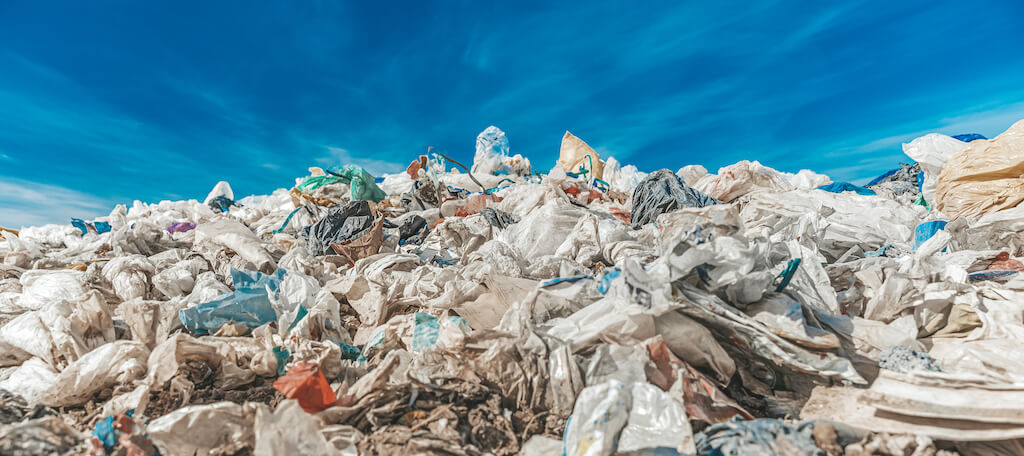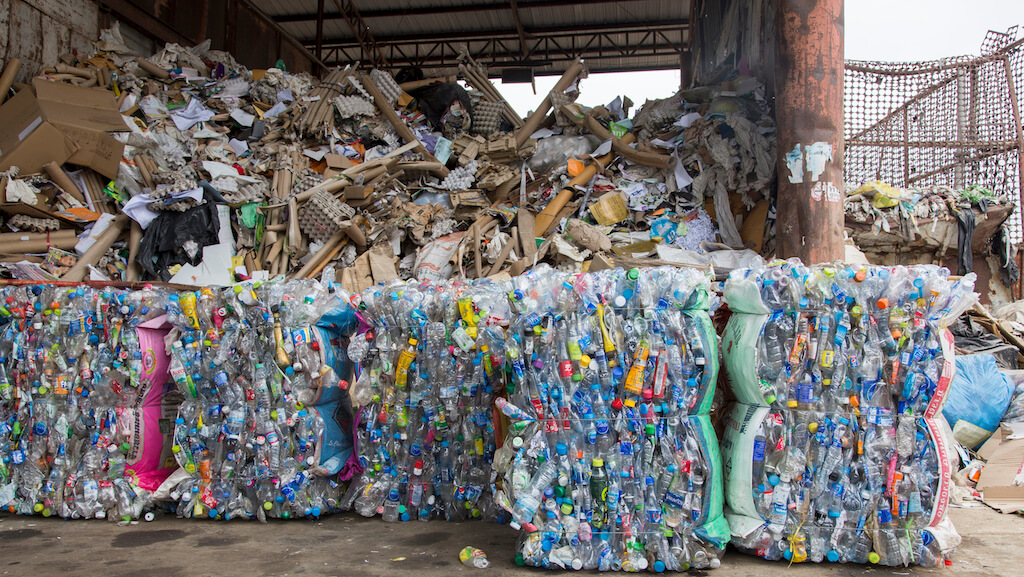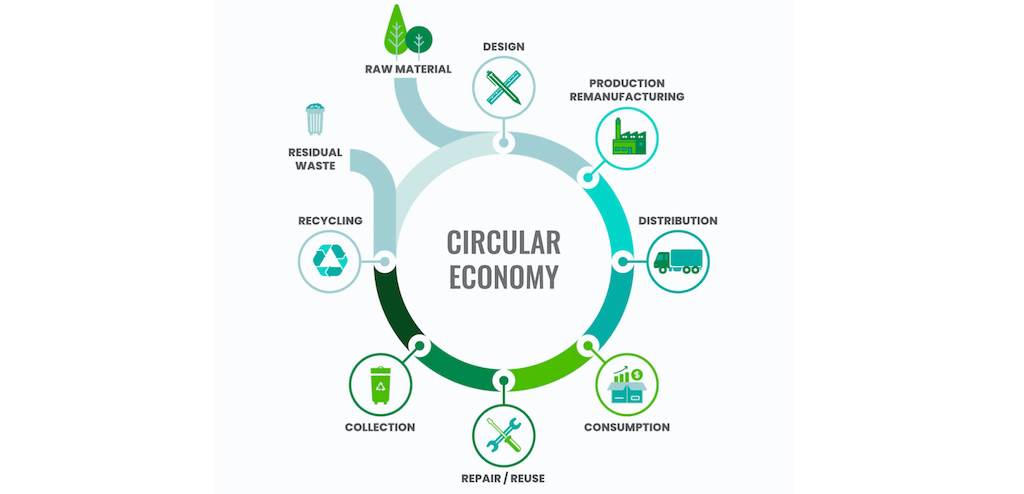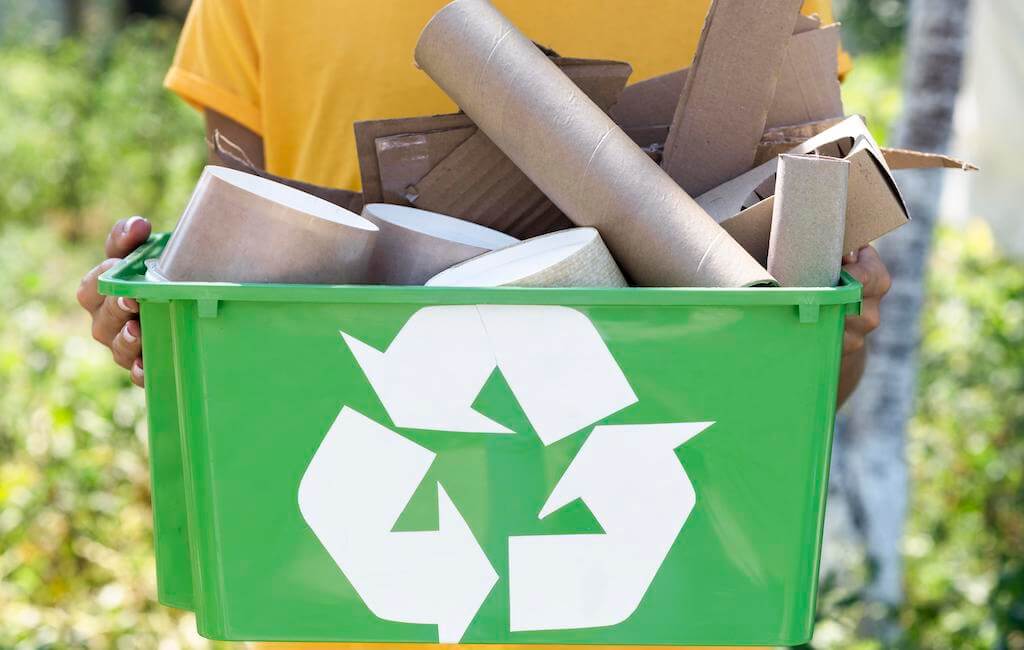Disruptive organisational changes are necessary for sustainable development in our society and businesses. The circular economy (CE) paradigm presents a fresh opportunity for innovation and integration between commercial enterprises, everyday life, and trash disposal. The sections below cover a circular economy model’s definition, meaning, guiding principles and benefits.
What is the Circular Economy?
The circular economy seeks to maximise the use of the material resources at its disposal by putting three fundamental concepts into practice: reduce, reuse, and recycle. In this approach, waste is utilised, product life cycles are prolonged, and a more effective and sustainable production model is formed over time. The concept is inspired by nature, where everything has a purpose and is put to use, and where trash is transformed into new resources. The balance between development and sustainability is preserved in this way.
One way to combat climate change, biodiversity loss, waste, and pollution is through the circular economy. It is a robust system that, by separating economic activity from the exploitation of finite resources, benefits society, the environment, and business.
Malaysia’s Current State of Waste Management and How It Affects the Environment

Developing nations like Malaysia have difficulty handling garbage responsibly due to their expanding cities and soaring populations. At a recycling rate of 31.52%, Malaysia produced 38 427 tonnes of waste per day in 2021.
There is significant pressure and an urgent need to address the waste management issue and lessen its effects on the environment and the general welfare of the population due to the lack of landfill space and rising disposal costs. According to statistics, Malaysia’s oil and gas sectors were responsible for around 41% of all fugitive emissions of CH4, followed by industrial wastewater treatment and discharge emissions at 28% and solid waste disposal sites at 18%. Palm oil mill effluent accounted for more than 99% of emissions from industrial wastewater treatment and discharge (POME).
Malaysia has pursued a gradual approach to centralising and privatising its solid waste management to improve it. The five essential steps of the standard hierarchy of waste management are reuse, reduce, recycle, treatment, and disposal. Disposal is currently the process that Malaysians use most frequently. By encouraging the reuse and decrease approach and ultimately lowering landfill trash, the Malaysian government continues to advocate for a more efficient form of waste management. A sustainable smart waste management system requires careful planning and effective resource allocation and management.
The emphasis has been on encouraging businesses to minimise commercial trash produced by manufacturing activities and consumer and home waste. The government offers targeted incentives to reduce trash production to businesses that engage in environmental management activities, mainly recycling waste such as toxic and non-toxic waste, chemicals, and recovered rubber. These businesses may be eligible for investment tax allowances of 60% on qualifying capital expenditures incurred within five years or income tax exemptions of 70% under Pioneer Status for five years.
Environmental deterioration has increased in developing nations concurrently with the acceleration of economic growth. Despite rules that support consumer waste management through recycling initiatives, it should be highlighted that industrial activities’ externalities are the primary garbage source. As a result, there is a greater need to adopt and switch to more sustainable waste management strategies to enhance and uphold environmental quality.
Challenges Faced by Malaysia in Transitioning to a Circular Economy

Despite its rising appeal among governments, businesses, and academia, the circular economy concept and its guiding principles are not without detractors and difficulties.
Possibility of success and Desirability
Is a circular economy 100% achievable? The circular economy framework has difficulties linked to the viability of the idea. The concept of eliminating waste lies at the heart of the framework. If the vision can be universally implemented in some industries, like manufactured goods, and materials can be used longer and reused before being disassembled and remanufactured, in other sectors, it may be more challenging to close the loop entirely.
All spontaneous processes irreversibly disperse energy into ever more chaotic states, leading to the loss of substance quality and quantity and making a complete closure of loops challenging. In recycling methods nowadays, the impurities of used materials can only be reduced to a certain degree.
Beyond the issue of attainability, there is the idea of business attractiveness. In the present context, attempting to achieve a 100% recyclability rate may be ineffective, for example, if the cost of recovery continues to be higher than the worth of the materials recovered. The absence of incentives in the current regulatory environment does not necessarily make everyone want to pursue a circular economy goal attractive.
Utilising only renewable energy is one of the circular economy’s core tenets, which may conflict with other resource efficiency principles. Utilising modern technology, such as increasing solar power, requires more limited resources. Without the proper use of produced energy, it can further worsen the resource shortage.
Social Sustainability
The circular economy paradigm strongly focuses on environmental sustainability, but it does not provide an in-depth explanation of the social aspect of sustainability (e.g. the fulfilment of human needs, territorial implications). Its guiding concepts are primarily developed from a commercial perspective and aim to balance environmental and economic advantages. Social advantages are frequently absent.
The new manufacturing activities in a circular economy, such as recycling or refurbishing, necessitate more labour because they are often non-standard. If this can lead to job opportunities, it’s not sure that they would be generated locally; a circular economy plan may potentially result in establishing a centralised recycling facility on the other side of the globe, which would not have the same potential for local job development.
Furthermore, abuses of power, poor or unfair working and living conditions, or a disregard for human rights may still undermine the necessities of people on a global scale. As a result, the circular economy paradigm may not necessarily satisfy all sustainability requirements.
Lack of Strategic Guidelines and Standardisation
The circular economy framework does not yet offer explicit standards for selecting actions or instructions on how to put the idea into practice. It is challenging to provide generic instructions since the circular economy differs significantly for various products and marketplaces and requires tailored or specialised methods. A circular economy plan may also involve challenging trade-offs. Circular economy principles may eliminate items that are not recyclable when choosing resources for a production process. However, the environmental advantages of some materials (such as less corrosive materials and lightweight components) may exceed the drawback of non-recyclability.
Per the same criticisms, despite the recent publishing of measurement tools to evaluate the circularity of one organisation, there are still no internationally acknowledged standards for circularity performance (in the form of an ISO, for instance). With its transition toolset, Circular Academy assists businesses in moving to a circular economy. To successfully alter the economy of today, however, would require the cooperation of all different types of stakeholders.
Why Do We Need to Switch to a Circular Economy

The implementation of the circular economy model has a number of advantages for the environment and the economy.
Economic Development
According to Accenture research, the circular economy could spur innovation and job growth to increase global output by $4.5 trillion by 2030. According to their analysis, a variety of circular business models, including sharing platforms, products-as-a-service (PaaS), and remanufacturing services, to mention a few, are ready to seize this opportunity for growth. Naturally, many economic advantages will accrue over time, so it’s crucial to approach these opportunities with a long-term perspective. We will understand the financial benefits more clearly as more companies and consumers adopt circular models and laws that encourage their adoption are put in place.
Business Adaptability
By adopting a circular business strategy, businesses employ more recycled products and fewer virgin materials. As a result, a business is less vulnerable to fluctuating material prices and supply chain disruptions. These supply interruptions are occurring increasingly frequently and will do so for the foreseeable future as the frequency of disruptive weather occurrences rises. Businesses can improve their resilience and gain a competitive advantage over their rivals by switching to more decentralised circular economy models.
Increased Customer Loyalty
Leasing agreements and subscriptions are two examples of new business models arising from the circular economy that create longer-term ties between companies and their clients and enhance the number of touchpoints during a product’s lifecycle. As a result, businesses that use these new circular models have the chance to amass competitive insights into the usage patterns of their clients, which may result in improved customer service, enhanced brand loyalty, and ultimately higher profitability.
Reduce GHG Emissions
Production of food, product consumption, and manufacturing together account for around 45% of all greenhouse gas emissions worldwide. This is a result of emissions being produced virtually constantly throughout our products’ life cycle, from the resources and energy consumed in their production and shipping to the emissions produced when we discard them after we’ve finished using them. According to the Circular Economy’s Circularity Gap Report 2021, we could cut global greenhouse gas emissions by 30% by 2032 if circular economy concepts were to be adopted everywhere.
Reduced Resource Consumption
Because of how resource-intensive our existing linear model is, it cannot be maintained by focusing more on recycling, repair, and remanufacturing methods instead of predominantly using virgin resources in manufacturing; a circular economy would eliminate the need to consume raw materials. The circular economy concept’s central tenet is reducing natural resource use, which has the potential to cut down on our usage of these resources by up to 70%.
How Can Businesses Adopt More Sustainable Practices to Support the Circular Economy
Without a doubt, businesses must undergo significant change to embrace sustainable economic concepts fully.
After all, a genuinely efficient circular economy necessitates a change in perspective from considering resources as “stocks” to “flows” that may be continuously utilised and recycled. However, how can businesses begin implementing these kinds of changes?
Fundamentally, implementing more eco-friendly economic principles usually boils down to two essential elements: willingness and innovation.
On the one hand, companies must be open to trying out novel approaches to minimising waste, recovering resources, and reusing or repurposing things. However, it’s also critical for businesses to cooperate, working on joint projects and exchanging information on cutting-edge technological trends or best practices.
Apple, a manufacturer of electronic products, is one example of a corporation that has made significant efforts to minimise e-waste and maximise the recycling of outdated technology. Apple has reduced the amount of virgin raw materials used in its goods by half by focusing on prolonged product life cycles, shelf life extensions, closed-loop recycling technologies, and packaging improvements.
Unilever, Puma, and the apparel store H&M are a few more businesses actively moving toward a more sustainable business model.
These companies have all taken on ambitious plans to lessen their environmental impact through waste reduction and increased efficiency throughout their value chains. In the end, the transition to circular economies offers fascinating new prospects for companies striving to advance their sustainability and innovation in the years to come.
The Benefits of the Circular Economy for Businesses and Consumers

Here, Gargeon highlights three advantages of transitioning your business to a circular economy:
Improve the Way You Use Limited Resources.
Making better use of natural resources like forests, soil, water, air, metals, and minerals is central to the circular economy concept. By switching to recycled and recyclable materials, businesses can reduce the quantity of land, water, and fossil fuels needed to generate new goods.
This is known as creating a circular economy. It entails altering consumption habits to cut down on new purchases and extend the lifespan of things, for example, through growing the second-hand and rental markets and changing cultural norms. Last but not least, it entails ensuring that items that have reached the end of their useful lives are collected, recycled, or used to create new products, lowering resource use.
Boost Economies
The circular economy reduces waste, fosters innovation, and generates jobs, creating a $4.5 trillion economic opportunity. New business models that emphasise sharing, reusing, repairing, and remanufacturing present substantial prospects for innovation.
A long-term perspective is crucial, as are short-term incentives to drive the transformation. These economic advantages and opportunities are long-term, indirect, and involve significant investment. One example is policies that provide more immediate financial incentives for companies to develop new business models and facilitate the adequate flow of reused and recycled materials along global value chains.
Boost Employment and Improve it
By 2030, shifting to a circular economy might result in a net gain of 6 million jobs. A distinct emphasis on social and environmental justice will be necessary to take full advantage of this potential.
However, new jobs will be produced in industries like recycling, services like repair and rental, or new firms that emerge to make creative use of secondary materials. Jobs may be lost in more linear sectors. Since they could be in different places and require other talents, these new positions cannot be viewed as straight replacements.
While a net increase in jobs is vital, the chance to give formal work and better working conditions to informal workers is another value-add of circularity.
Closing Thoughts on the Circular Economy and Its Potential for Malaysia
This article demonstrates that a circular economy’s social, environmental, and economic advantages are present in the affected areas, but achieving these advantages will need bold action. Consumers and businesses both have a part to play. Gargeon is available to help you, and the new Circular Economy Action Agenda is a great place to start. To learn more, get in touch with us right away.

